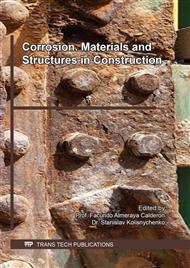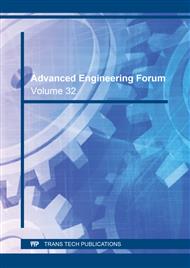p.1
p.15
p.27
p.41
p.53
p.63
p.75
The Behavior Study of Reinforced Concrete in an Aggressive Environment
Abstract:
Concrete is today the most widely used building material in the world; it has experienced a real boom in its association with steel in reinforced concrete. The mechanical and chemical complementarity between these two materials has made it possible to build economically and reliably the structures required for all human activities, hence sustainability becomes both a requirement and a major concern of manufacturers. It is therefore essential that the functions of the reinforced concrete are not reduced and that its properties are not altered. However, it is a reactive and a porous material able to the physical and chemical degradations in contact with its environment, due to a chemical reaction between these two media.In this work, we are interested in characterizing and monitoring the ions chloride penetration in reinforced concrete. For this purpose, specimens of the reinforced slab type are made with a composition standardized according to the DREUX-Gorisse method, and we have followed the concrete’ mechanical characteristics evolution in parallel with the immersion / drying cycles’ slab in the sea water. This development was followed with an ultrasound device for a period of about thirty two (32) months. After this period, the reinforcements’ electrochemical behavior by cyclic voltammetry, in these slabs was studied in order to determine the corrosion rate.The results indicated that there is a relationship between the concrete’ strength and the state of its reinforcements with the surrounding environment. On the other hand, the coating thickness is a fundamental parameter of the reinforced concrete durability which makes it possible to lengthen the corrosion initiation.
Info:
Periodical:
Pages:
53-61
Citation:
Online since:
April 2019
Authors:
Keywords:
Price:
Сopyright:
© 2019 Trans Tech Publications Ltd. All Rights Reserved
Share:
Citation:



